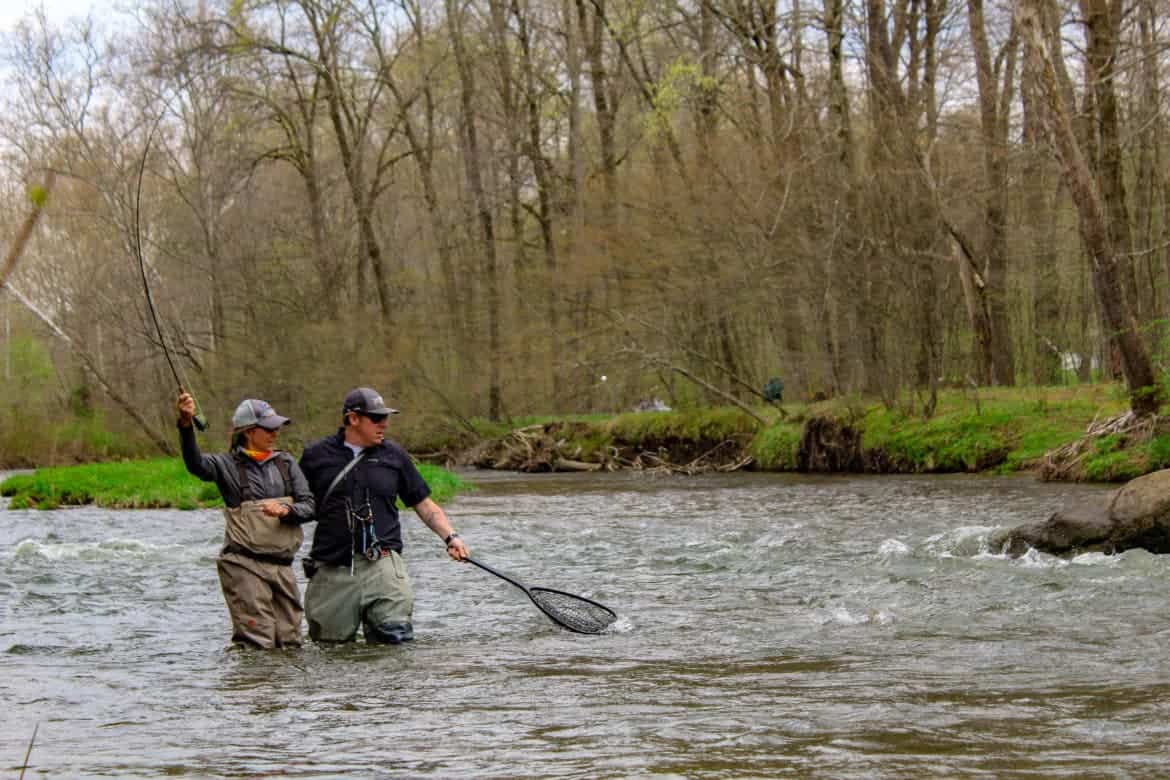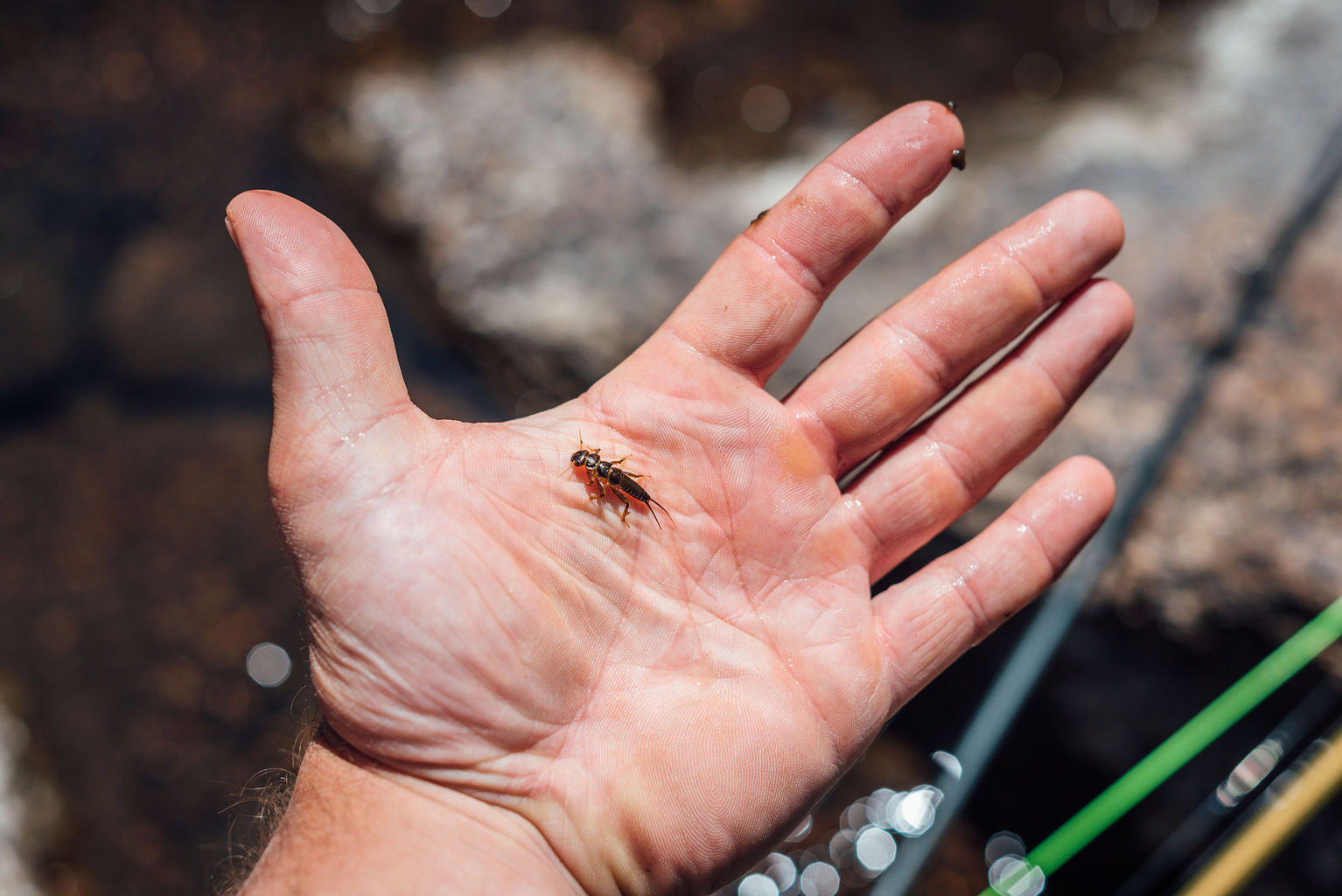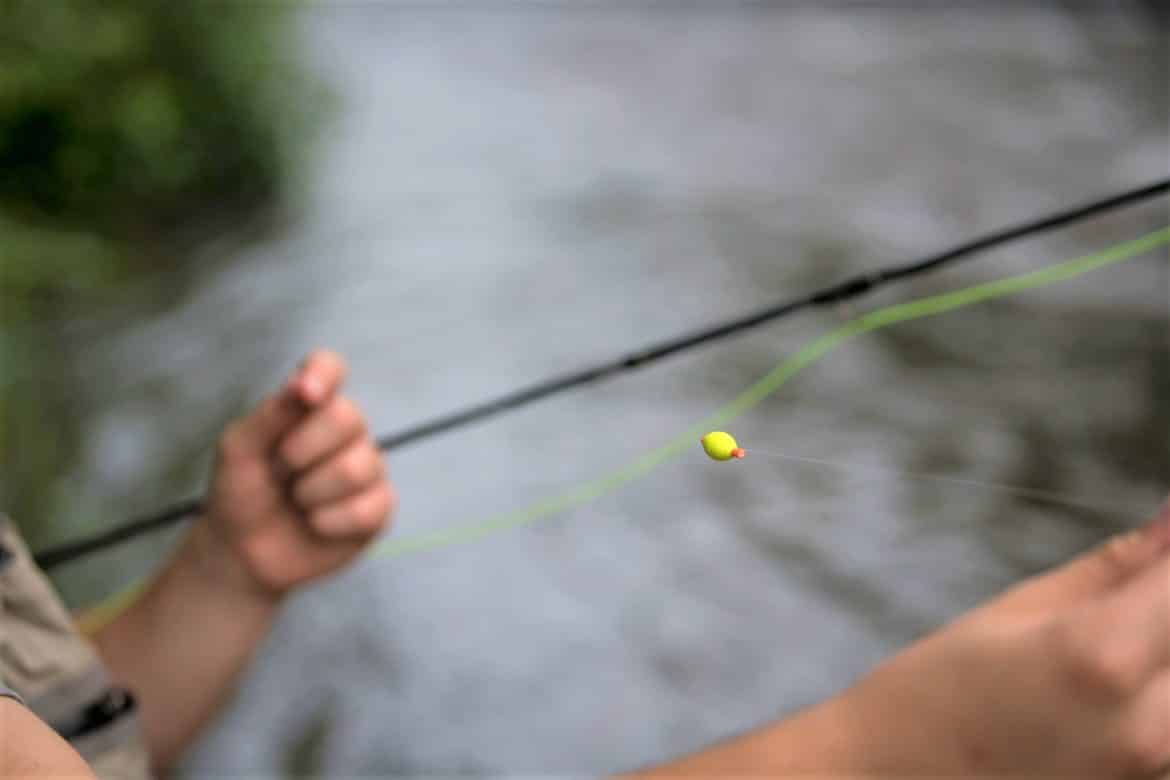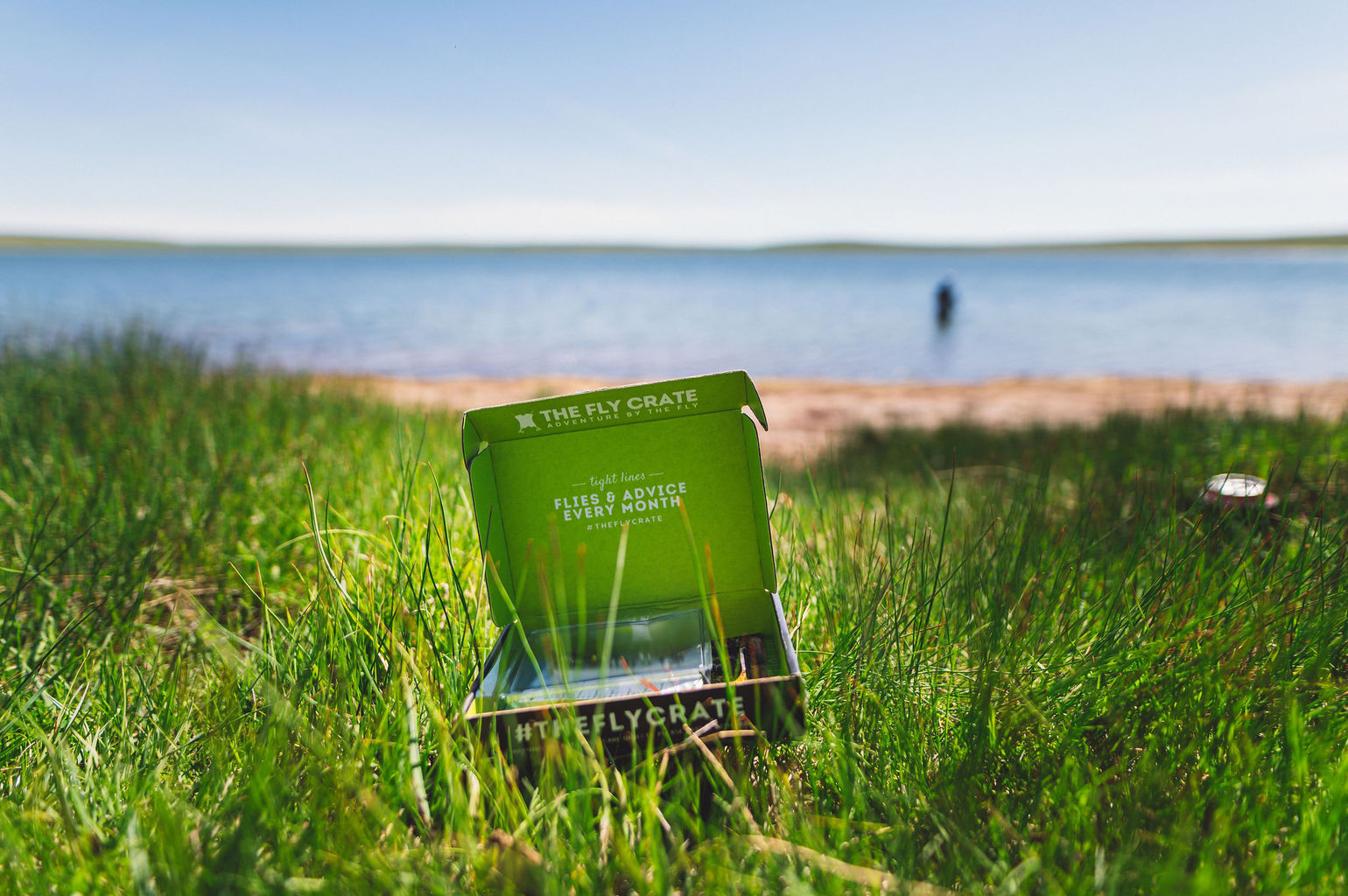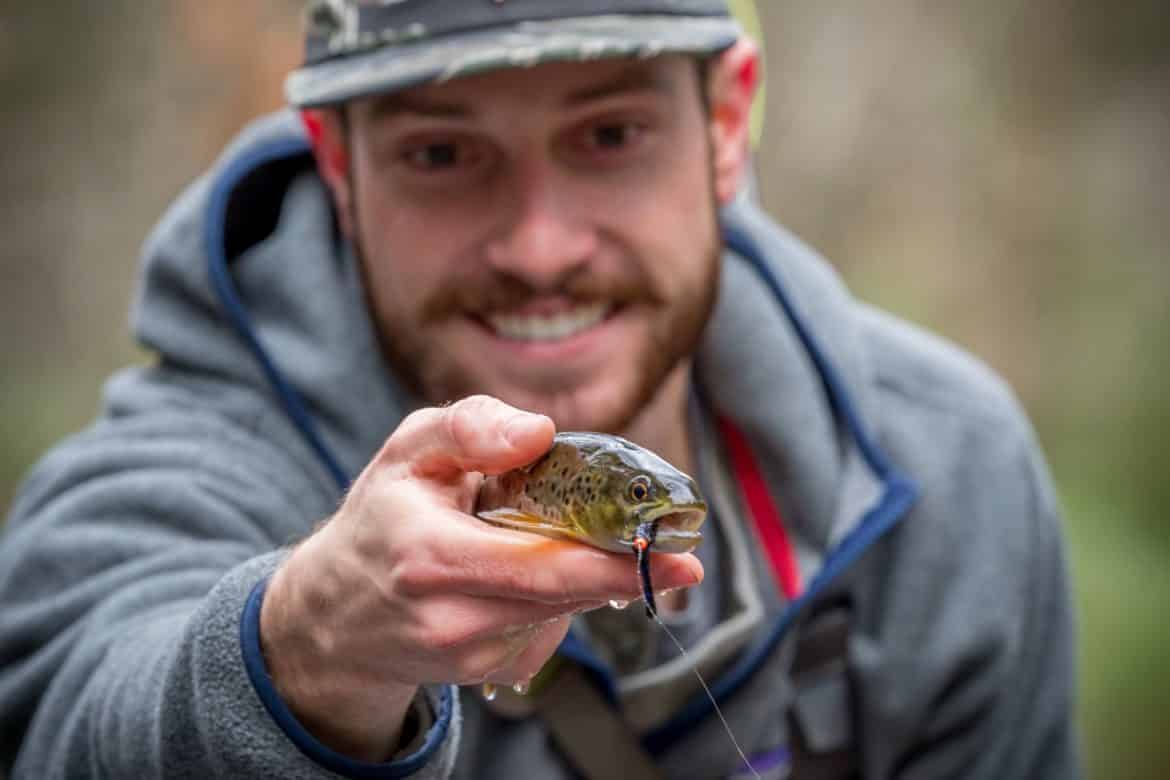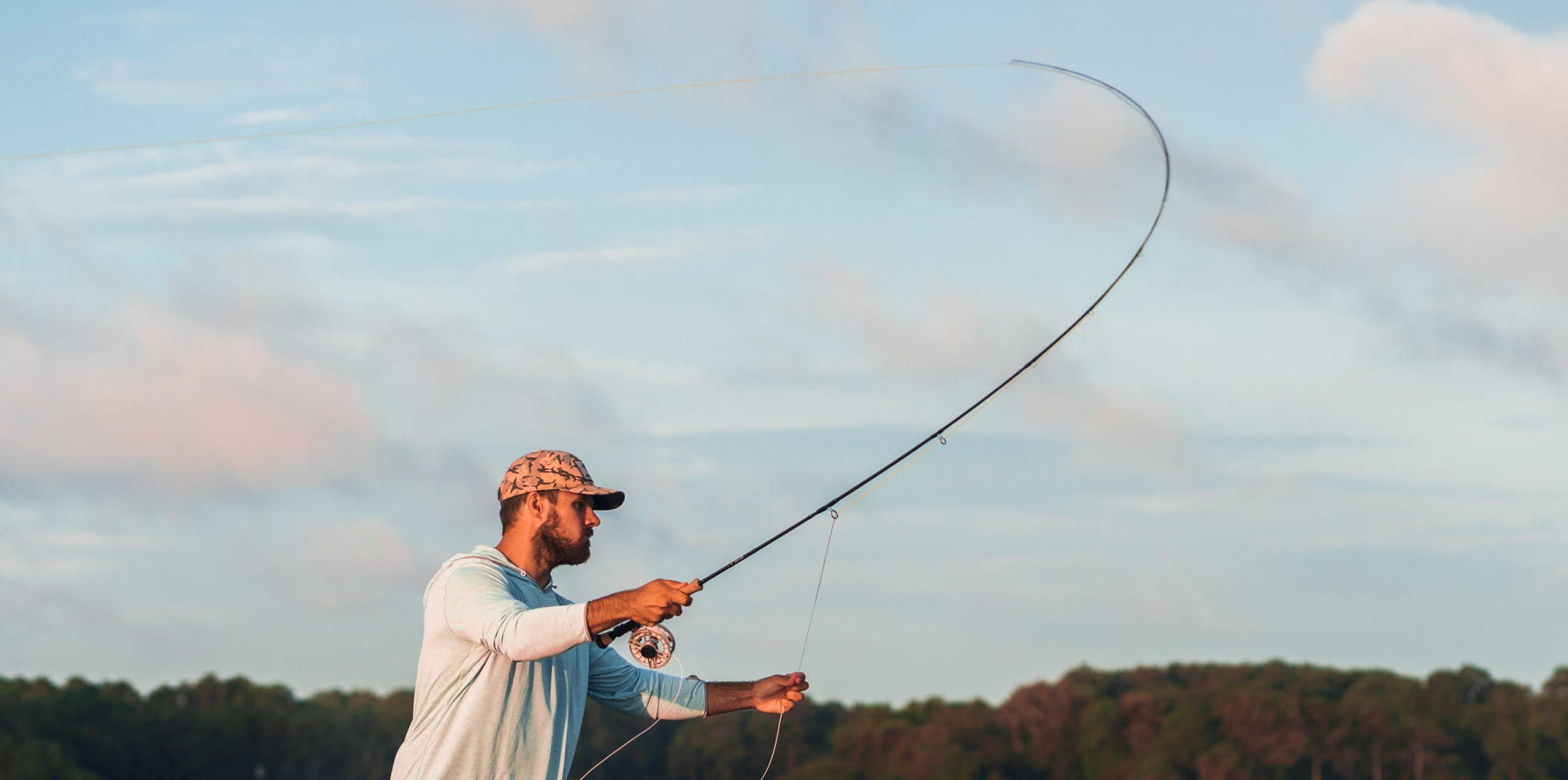Tips to Improve Casting and Spend More Time Fishing
A nice brown trout gently slides out from an undercut bank to sip the ant that had just fallen into the water. It’s a foolish move on the fish’s part, as his cover is now blown and the angler begins to formulate a plan.
Making sure to stay out of sight from the trout’s sharp peripheral vision, an ant pattern is tied on and the perceptive angler slinks down into the water. Line is peeled off the reel and a few false casts later the moment is finally here!
The fisher can already see the Instagram likes rolling in on the picture of this hog when suddenly, everything grinds to a screeching halt. In the midst of all the daydreaming the line extended too far and ended up snarled in some otherwise unassuming mountain laurel. The ensuing commotion results in a lost fly and a forever vanished brown trout.
It’s a scene every angler dreads, and knows too well. The culprit in this exciting moment-turned-sour is the fly cast gone wrong. Fish will oftentimes look past less than perfect fly imitations or presentations a bit outside of their feeding lane, but recovering from a poor cast is tough. Here are a few tips to help make sure that next opportunity for a memorable fish doesn’t end in spooked trout and snapped-off flies.
Move Your Body
As a guide, it’s always preferential to have a guest who is mobile vs. skilled at casting. At first glance that might not make much sense, but the reasoning behind it is sound. It’s always easier to get our body into better position rather than make a more difficult cast. Throughout the day sentences like “take one step out and half a step up” followed by “one more step up half a step back” are commonplace.
After a while it almost certainly feels like micromanaging but once we can zero in on how much line is out of the reel and where our flies are landing, it’s much much easier to make those minor adjustments to our body position rather than take more line out or in and change the casting itself.
Fly Fishing Made Easy 👍
Our Quarterly Fly Club ships 1,000’s of flies to anglers all across the United States. Receive curated fly assortments selected for the season with in-depth articles on how to fish them. Great for beginners to learn and for intermediates to discover new flies.
Make A Plan
My dad always used to say “a failure to plan is a plan to fail” and while he probably wasn’t referencing a fly cast, it’s quite applicable. If a particular fish has been picked out, take a minute and devise a plan for how the cast will play out. Odds are time is a luxury, and assuming a fish isn’t on the verge of being spooked, there’s time to be had for proper planning and coordinating before a cast.
Taking time to plan for a cast might not seem very necessary, but it’s well worth it for a nice fish. When taking stock of how the cast should unfold, look for things like overhanging branches, submerged logs, uncharacteristically large rocks, and perhaps most importantly the currents between where you’re standing and where the fish is.
Analyzing stream currents is perhaps the most overlooked aspect of a fly cast. Between the standing angler and a fish could be dozens of different current speeds, each of which can wreak havoc on a drifting fly.
Observe Your Surroundings
Take notice of where those most irregular currents are and plan to either avoid them entirely, or know what to do with the fly line when the flies get there. Sometimes the angler has to pull flies and line through spots until the water speed and direction is more suited to our desired drift speed. Other times it could simply mean lifting a rod tip to avoid a back eddy that threatens to disrupt a natural drift.
What Can Threaten A Cast?
- Trees/Branches
- Conflicting Currents
- Rocks
- Overhanging Embankments
- Brush
Casting is all about your surroundings, and where you are in relation to them. Watching for downed trees, threatening currents, and overhanging bushes and then getting your body into a better position to avoid those dangers is going to result in more time fishing. Not only more time fishing, but less time retying rigs that have been lost to the trees lining the banks of our favorite streams and rivers.
More time fishing and catching fish, less time laboring through the tediousness of a retie: what’s not to love about that?!
It all starts with following these tips and executing a successful cast.



